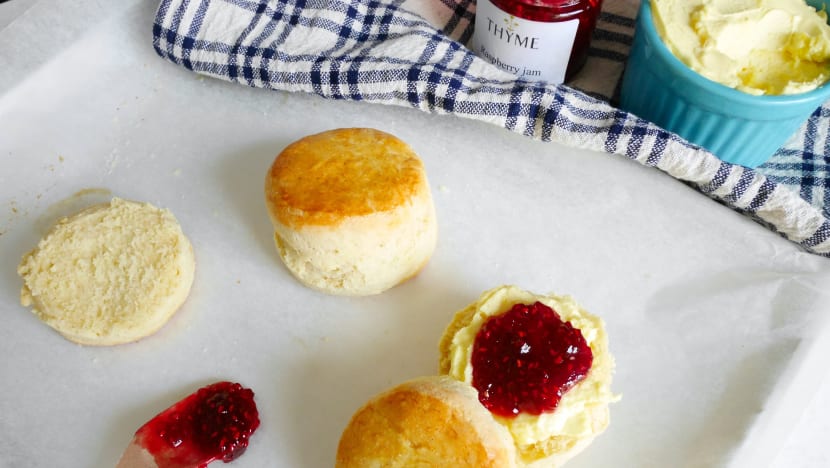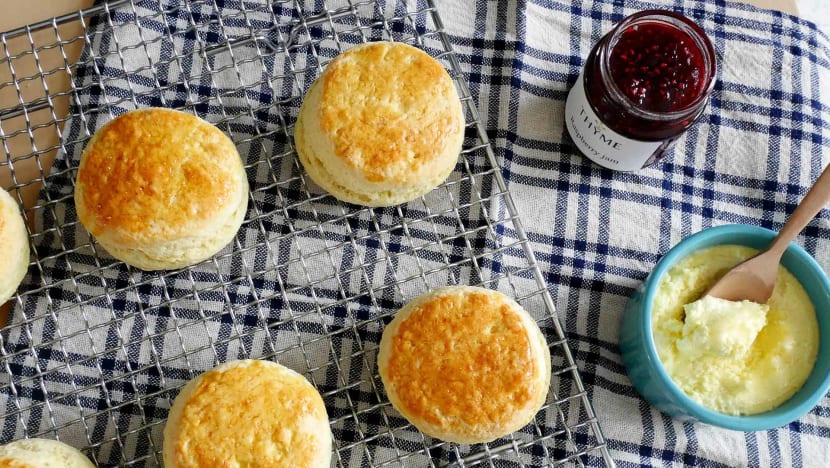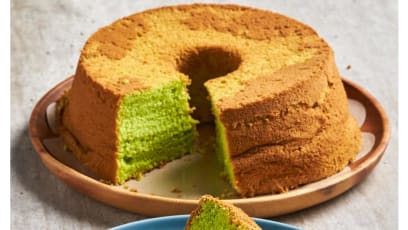4 Things You Should Know About Scones And Teatime
Is it ‘skoan’ or ‘skon’?

1. Jam first, or cream?
It depends which part of scone country (which popularised the teatime treat) you're in. Folks from Devon prefer layering on the cream, then the jam, while peeps from Cornwall go the jam first, cream second route. Either way is acceptable — we like to slather on the cream first if it’s thick and buttery like the double or clotted variety, then crown it with quivering jam.
2. Use a knife or your fingers to split a scone?
It’s said that British royalty and other noble folk twist apart their scones with their fingers rather than slice them with a knife. They then break the halves further into bite-sized pieces, slather on jam and cream, and nibble each morsel daintily, probably to avoid having crumbs and cream smeared unglamorously all over their lips. Honestly, it's too fussy for us. We prefer using a knife to do the job ’cos it’s neater, plus what's wrong with biting into a scone? But please, don’t sandwich your scone halves to form a ‘burger’ — the queen will not approve.
3. Say ‘skoan’ or ‘skon’?
Apparently, aristocrats pronounce it ‘skoan’ while commoners say ‘skon’. So say skoan, lah.
4. Is it ‘afternoon tea’ or ‘high tea’?
‘High tea’ — as we often call it erroneously in Singapore — actually refers to a heavier meal eaten by the English working class around 6pm, after a hard day of manual labour. It’s a far cry from the more delicate ‘afternoon tea’ created by idle aristocrats, comprising elegant delights such as, yes, scones, petite cakes and finger sandwiches paired with fine tea, usually enjoyed between 3pm to 5pm.


















![Boss of Rui Ji chicken rice used to own a tattoo parlour! Talk about a career change! Link in bio to read more
📍Rui Ji Chicken Rice
Blk 93 Toa Payoh Lor 4,
#01-48, S310093
📍148 Beach Road,
#B1-01 The Gateway,
S189720
📍Blk 305 Ubi Ave 1,
#01-179, S440305
[till 16 Apr 2024]
https://tinyurl.com/5dudypkh](https://onecms-res.cloudinary.com/image/upload/s--9s0hbGvI--/c_fit,h_396,w_223/f_auto,q_auto/v1/8days-migration/18015522113203478.jpg?itok=EX3xKSNq)






![We stan a kind-hearted boss with a good heart! 💕 Link in bio to read more
📍Rui Ji Chicken Rice
Blk 93 Toa Payoh Lor 4,
#01-48, S310093
📍148 Beach Road,
#B1-01 The Gateway,
S189720
📍Blk 305 Ubi Ave 1,
#01-179, S440305
[till 16 Apr 2024]
https://tinyurl.com/5dudypkh](https://onecms-res.cloudinary.com/image/upload/s---y3eV-Ts--/c_fit,h_396,w_223/f_auto,q_auto/v1/8days-migration/17999638880322602.jpg?itok=Tiqm3SVR)


